Hebridean sheep is one of the best choices out there when it comes to conservation grazing.
When practicing conservation grazing you need the right breed of sheep that can clean while not destroying your grassland.
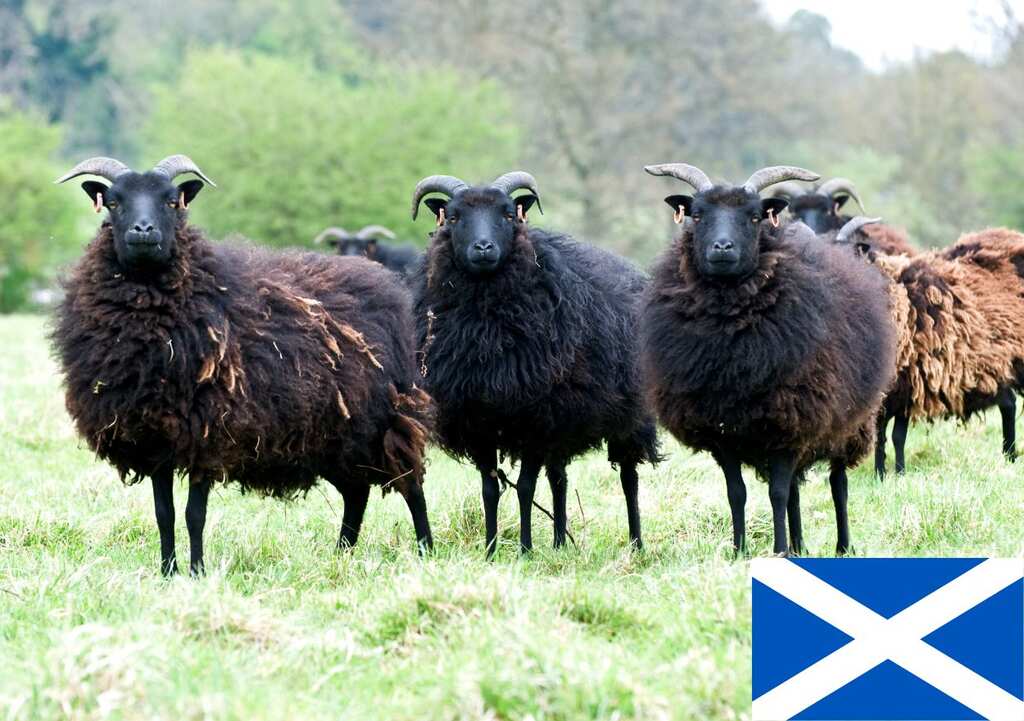
With their ease of raising and remarkable suitability for conservation grazing initiatives, these hardy animals are not only beneficial for farmers but also invaluable partners in preserving our farmland ecosystem.
Contents
Short summary
| Good for: | homesteaders and small farms |
| Type: | conservation grazing |
| Size: | small size |
| Color: | black or dark brown |
| Fleece: | 33 to 38 micrometers |
| Lifespan: | 10 to 15 years |
| Growth Rate: | grow slowly, 1.5 – 2 years for the final weight |
| Weight: | ewe: 77 to 88 lbs (35-40kg), ram: 110 to 132 lbs (50-60 kg) |
| Sexual maturity: | 18 to 24 months |
| Slaughtered age: | 18 months old |
| Litter size: | 1-2 lambs per year |
| Price: | $50 to $75, registered ones reaching up to $100 |
Hebridean sheep are a small domestic breed of sheep with origins from islands off the western coast of Scotland, and their primary purpose is conservation grazing.
Characteristics
Size
Hebridean sheep have a small size.
These sheep are considered smaller than other small sheep breeds, such as Jacob sheep.
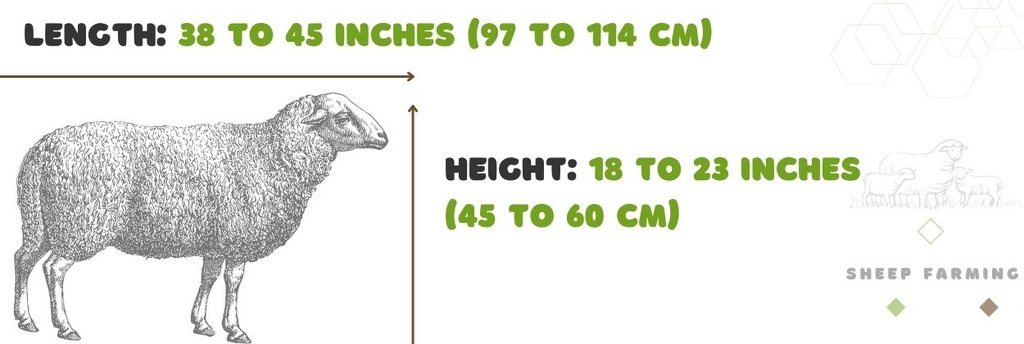
An adult Hebridean sheep has a wither height of 18 to 23 inches (45 to 60 cm) and a length of 38 to 45 inches (97 to 114 cm) from the tip of their nose to the base of their tail.
The exact height and length of an individual Hebridean sheep can vary depending on factors such as age and genetics.
Color
These sheep have a black or dark brown color.
Fleece
The fleece is entirely black or dark brown, but their black wool lightens to a brownish shade when exposed to sunlight and often turns gray as they grow older.
The fleece covers the body but not the head and legs.
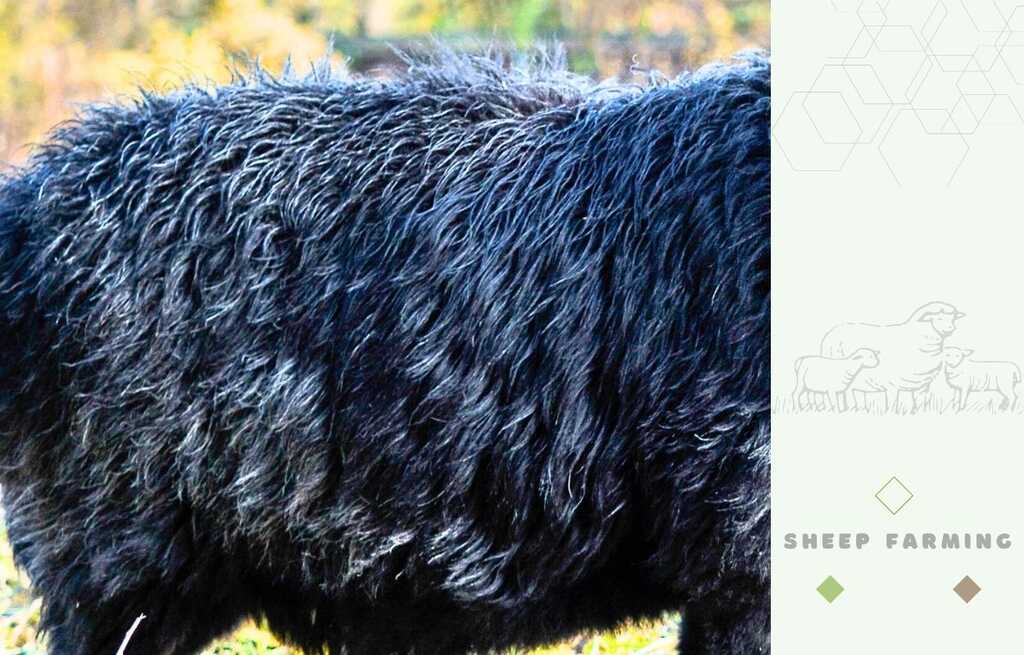
In some cases, these small sheep have a double-coated fleece comprising a delicate underwool layer beneath a layer of coarser fibers, and male sheep may display a mane or a ruff crafted from coarse wool.
The staple length of the Hebridean fleece ranges from 1.9 to 5.9 inches (5 to 15 cm).
Fiber micron measurements fall within the 33 to 38 range, corresponding to a Bradford count of approximately 45-50.
As a result, the wool has a moderate texture — neither extremely fine nor overly coarse.
Head, Ears, Face, Eyes, Tongue
The head is small compared to the rest of the body, while the face is slightly dished and covered in short black hair.
Rams have a straight facial profile without the characteristic of a ‘Roman nose’.
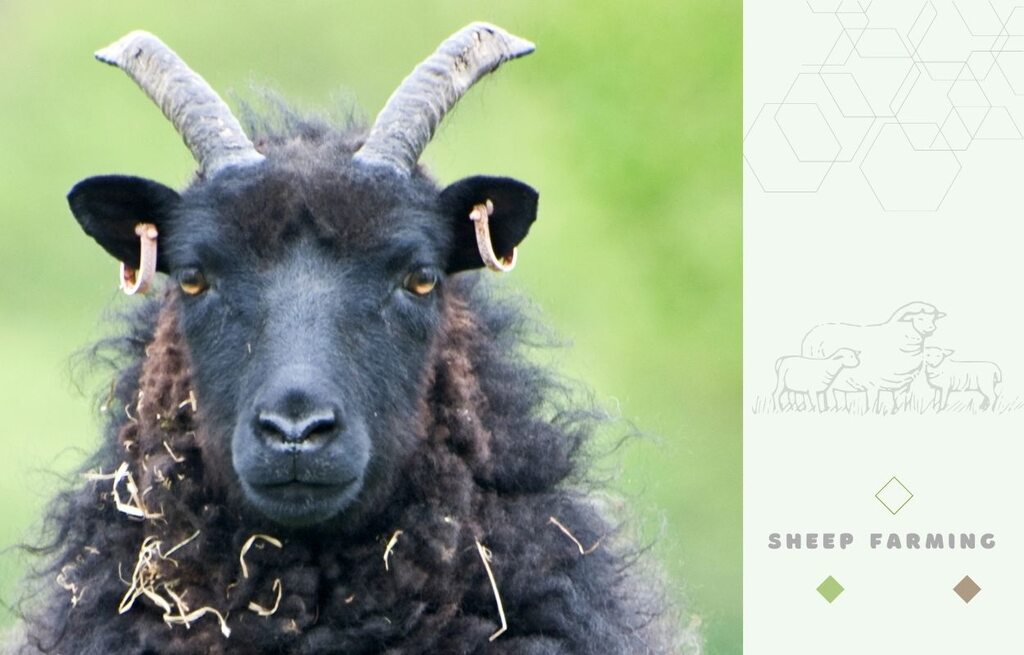
The eyes are small and have a hazel-brown or yellow-brown color.
The ears, like the head and eyes, are also small and horizontal.
What’s particularly interesting about these sheep is that their tongues are also entirely black.
Horns
These sheep have from 2 to 8 horns. Both rams and ewes have horns.
In general, most of them have just one pair of horns, but it is not uncommon to have two or even more pairs. They are known as polycerate sheep.
In both sexes, the horns are completely black. Even though their head has a small size, their horns are massive.
The horns of the 2-horned rams follow an upward trajectory from the head, then curl backward and outward, with fewer than 1 1/4 spirals being the norm.
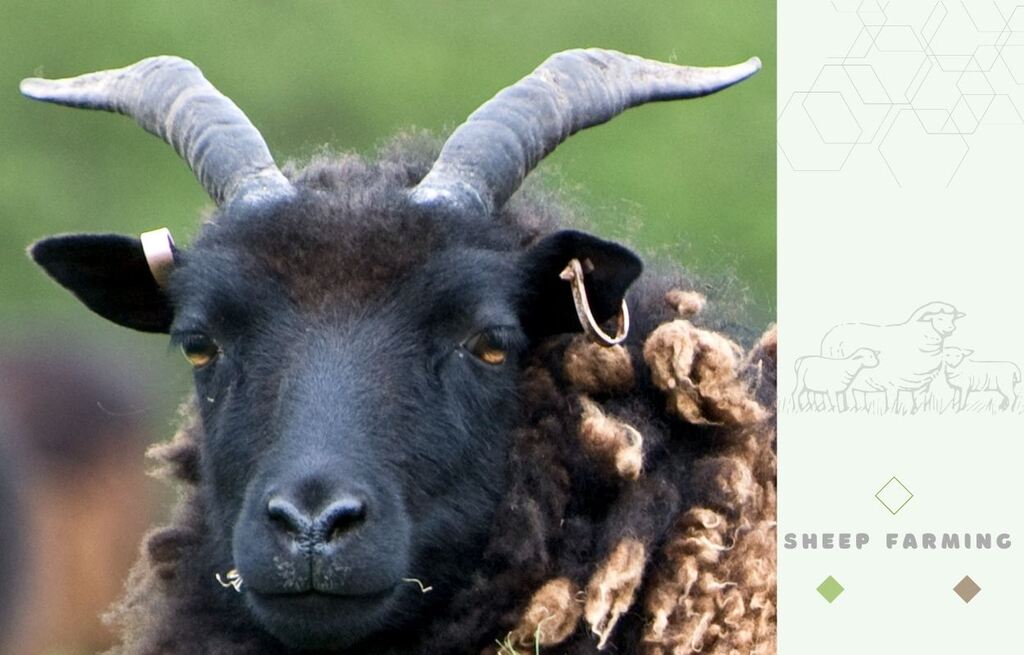
In the case of 2-horned ewes, their horns have a scimitar-like curvature, sweeping backward and outward from the head.
The 4-horned sheep have the upper horns larger than the lower ones. The upper horns can either stand predominantly upright or curve significantly to the side or front.
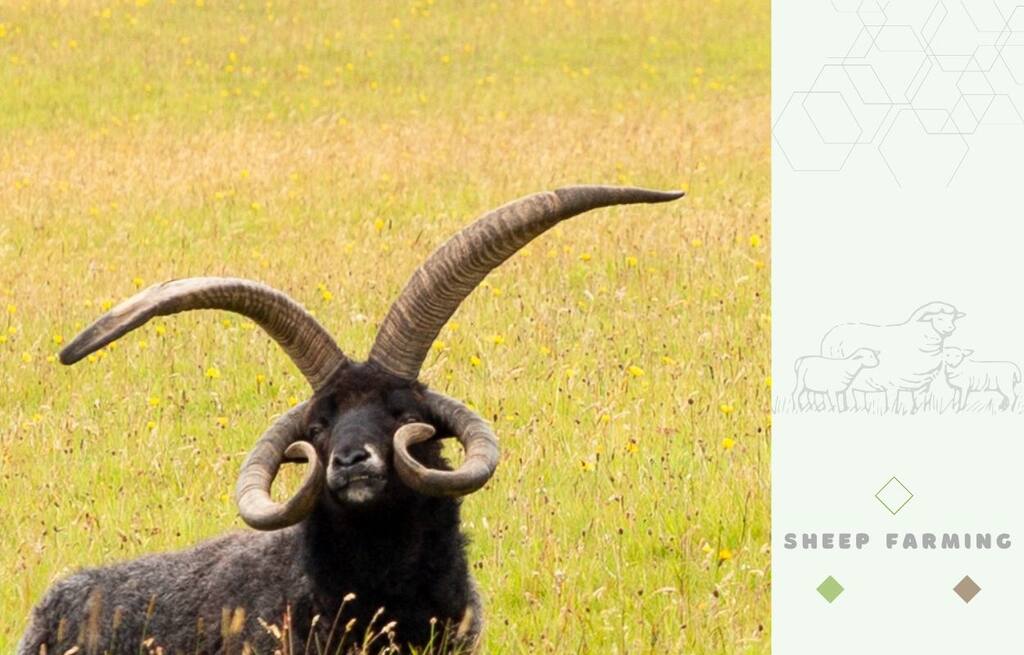
The 4-horned and multi-horned sheep have delicate horns that can easily break. In some cases, the horns of multi-horned sheep can sometimes be fused together.
Torso
Their torso is well-muscled and compact, indicating their hardy and adaptable nature. The body is good for efficient foraging and withstanding harsh weather conditions.
Legs and Feet
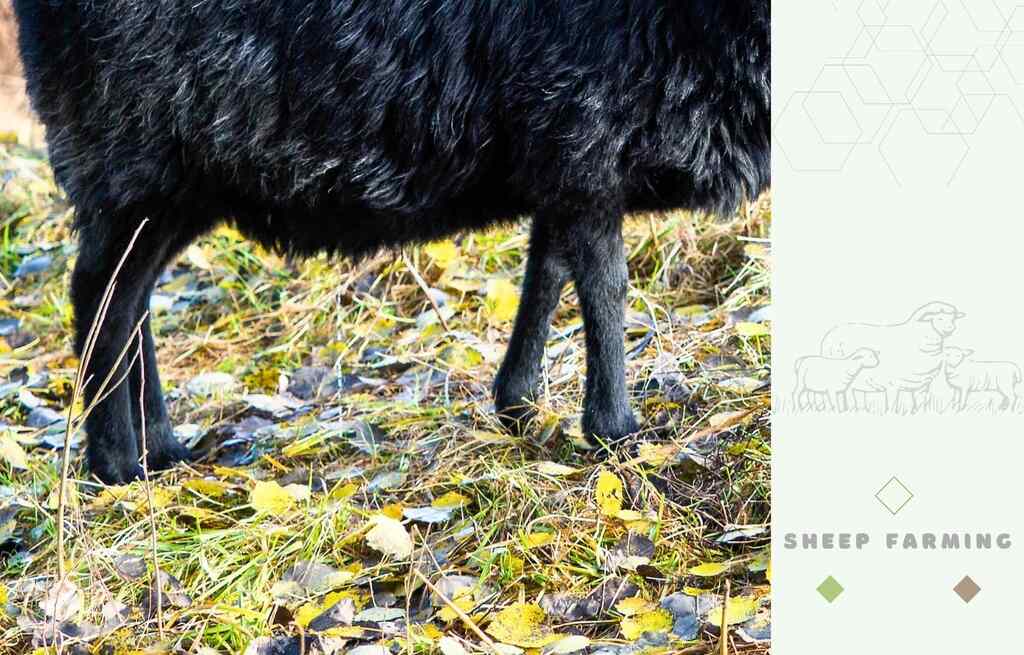
Their legs are long, thin, and covered with glossy black hair, while their feet are very small and sturdy.
Tail
Sheep have short tails covered in thick fleece.
This trait reduces the risk of soiling their fleece and makes them great for extensive grazing.
Hebridean sheep Fact: The tail of the Hebridean sheep should not be docked.
Lifespan
A Hebridean sheep can live between 10 and 15 years.
Growth Rate
How fast do they grow?
Hebridean sheep grow slowly, reaching their final weight and sexual maturity at 1.5 to 2 years old.
Ram lambs tend to grow faster than ewe lambs, especially when the rams are not castrated.
During their first year, sheep continue to grow and develop, although the rate of growth tends to slow down compared to the lamb stage. Proper nutrition plays a significant role in their growth during this period.
Weight
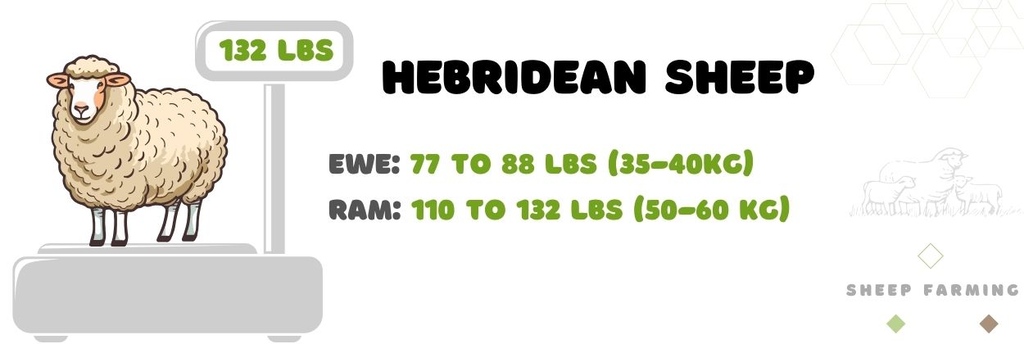
A ewe can reach a weight between 77 to 88 lbs (35-40kg).
A ram can weigh between 110 to 132 lbs (50-60 kg).
Slaughtered age
Hebridean sheep can be slaughtered at the age of 18 months old.
A sheep at that age can offer a dead weight of about 44 lbs (20 kg). This is a good amount of weight, considering their small size.
Shearing
These sheep do not necessarily need to be sheared due to their ability to naturally shed their fleece.
Unlike many other sheep breeds that require shearing, Hebrideans can shed their wool when the weather gets warmer.
But, it is highly recommended to shear them anyway, as the felted fleece can be quite uncomfortable for the sheep. Shearing should be done as soon as the shedding starts, as it makes the sheep feel comfortable and refreshed.
While sheep are primarily raised for conservation grazing, some farmers also have an interest in their wool.
Yes, some farmers want to collect their wool for various purposes, and it is possible. However, it requires attention and careful planning regarding the timing of shearing.
To collect wool from these sheep, you have to shear them before the shedding process begins. Once shedding starts, their wool isn’t available for harvest in the same way as wool from non-shedding breeds.
For this, you must monitor the weather, observe when it starts getting warmer outside, and check the status of the wool for shedding. The timing of shearing can vary but is often done in late spring or early summer.
Temperament and Behaviour
Hebridean sheep are calm, docile, and very easy to work with and handle.
These sheep are social animals that live in large groups or flocks, as they are perfectly capable of sharing their space with other types of animals without any issues of territory.
Their self-reliant nature makes them independent from people, while their natural survival instinct helps them thrive even in the most isolated areas.
They are incredibly vigilant and always on alert, an instinct that allows them to detect a predator or any potential danger very quickly and flee.
Another important trait to mention is their energy and curiosity. This high level of energy sustains their grazing behavior, enabling them to graze and search for roots, vegetables, and plants all day long without any breaks.
As for their flock training, Hebrideans can easily be guided by both shepherd dogs and people. These sheep, thanks to their good speed and ease of management in a flock, are sometimes used to train shepherd dogs, such as Border Collies, to work with sheep and control the flock.
Usage
Sheep are used for conservation grazing. This is their primary purpose, but some people also use them for meat and wool production.
Conservation Grazing
- Manage habitats such as landscapes, grasslands, and heathlands.
- Enhance biodiversity, as their grazing behavior promotes the diversity of various plant species and decreases the dominance of others, creating a more balanced ecosystem.
- Control invasive plants.
Sheep are recognized as one of the greatest choices for conservation grazing due to their physical characteristics, behavior, and management style.
These sheep have a natural instinct for grazing and foraging, which leads them to graze for extended periods, helping to control vegetation growth or prevent overgrowth, depending on the habitat.
One of their preferred tasks is to search for shrubs, roots, young tree saplings, and some invasive plants.
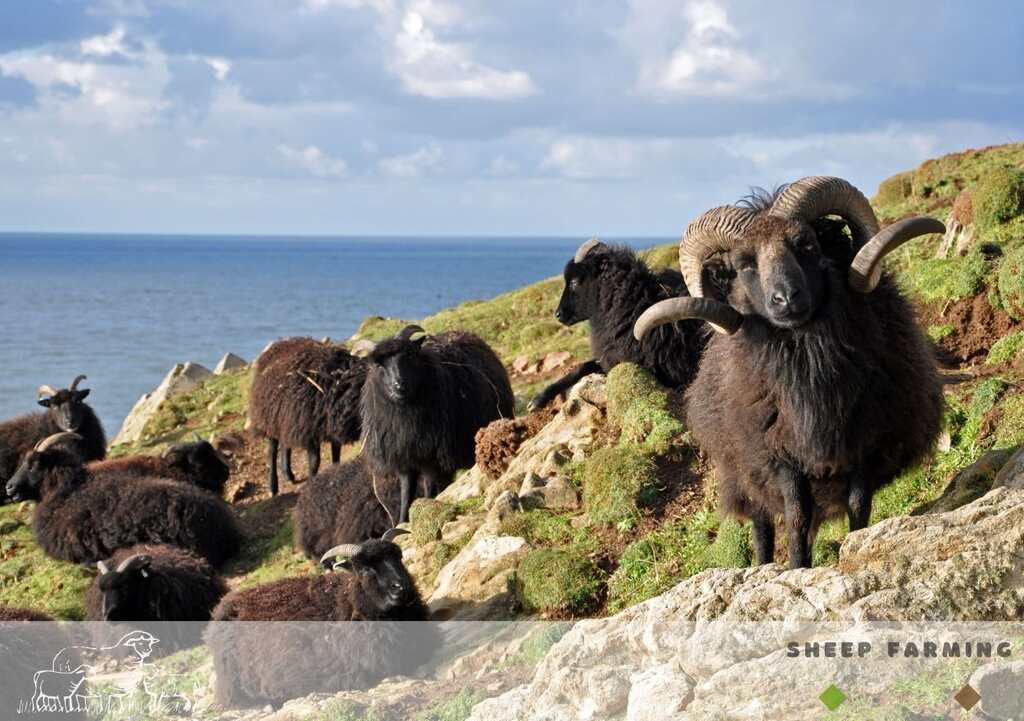
The hardiness of these sheep allows them to graze and forage in a wide range of environmental conditions, including harsh or less favorable landscapes, such as steep slopes.
The small size of these sheep makes them agile and enables them to access areas where larger animals cannot reach to graze.
Also, their small size minimizes their impact on the environment, allowing them to graze without causing damage. They are promoting low-impact grazing practices.
The flock’s social structure also contributes to their effectiveness in conservation grazing. They stay together in a flock to protect themselves from predators, and in this way, they provide precise control of vegetation.
Meat and Wool
Despite their small size, these sheep are sometimes used for their meat and wool as well.
Hebridean sheep, when compared to other types of sheep raised for meat, such as Dorset, provide smaller quantities of meat due to their smaller muscles. These sheep have slender bones, and a significant proportion of meat is available only on their carcass.
Hebridean sheep meat has a dark color and a low-fat content.
Their fat contains high levels of polyunsaturated omega-6 and omega-3 DHA fatty acids and very low levels of free cholesterol, making it very healthy.
Because they constantly graze on various plants, leaves, and shrubs, their meat has a distinct flavor that some classify as sweet. Another factor contributing to the flavor of their meat is their slow growth rate.
As for their wool, it can be split into two layers: the top coat, which is coarser, and the undercoat, which is finer.
A ram has about 6.6 lbs (3 kg) of fleece, while a ewe has only 3.3 lbs (1.5 kg).
You can make outer garments and blankets from it. It is suitable for weaving, knitting, felting, as well as spinning.
Tip: If you want to use their wool, be aware that it may contain a lot of vegetable matter as they graze all day. Also, due to its dark-colored wool, it contains a significant amount of lanolin, leading to faster dirt accumulation. So, it is recommended to wash it first.
Raising
Hebridean sheep are low-maintenance when it comes to raising them.
They need minimal attention, with no special dietary needs or grooming, unlike breeds such as Valais Blacknose, which require more intensive care for healthy growth.
Feeding
Hebridean sheep can be entirely fed with grass, but this depends on the living area and the quantity of grass you have.
You have to make sure that the quantity of grass or overall vegetation in your field is sufficient for all the sheep you have.
If vegetation is abundant, they can feed themselves without the need for supplemental feed.
During colder seasons, when no vegetation is available, you can feed them an unlimited amount of high-quality meadow hay. The abundance of hay allows them to eat as much as they need without any restrictions, providing a constant and ample source of nutrition during winter.
Tip: Grass with snow on it or frozen grass does not have any nutritional value for these sheep. When this occurs, start feeding them hay.
If you don’t have a supply of hay for the cold season, you can use pellets. It is recommended to feed them with a 16% protein mix, as these sheep do well on lower protein content. Also, you can provide nuts when the weather is bad.
No matter the season, you should add mineral blocks near the sheep’s water supply.
How many per acre?
You can raise 2-3 Hebridean sheep per acre.
However, this number can vary depending on your goals as a farmer. You need to consider your intentions regarding lamb rearing, hay production, the seasonal changes in your local climate, the metabolic rates of the sheep, the age and condition of your pasture, soil type, and drainage conditions.
If you plan to lamb, you should also ensure that there is enough grazing available on that acre for the lambs after they are weaned.
This will enable them to grow and develop to a healthy weight.
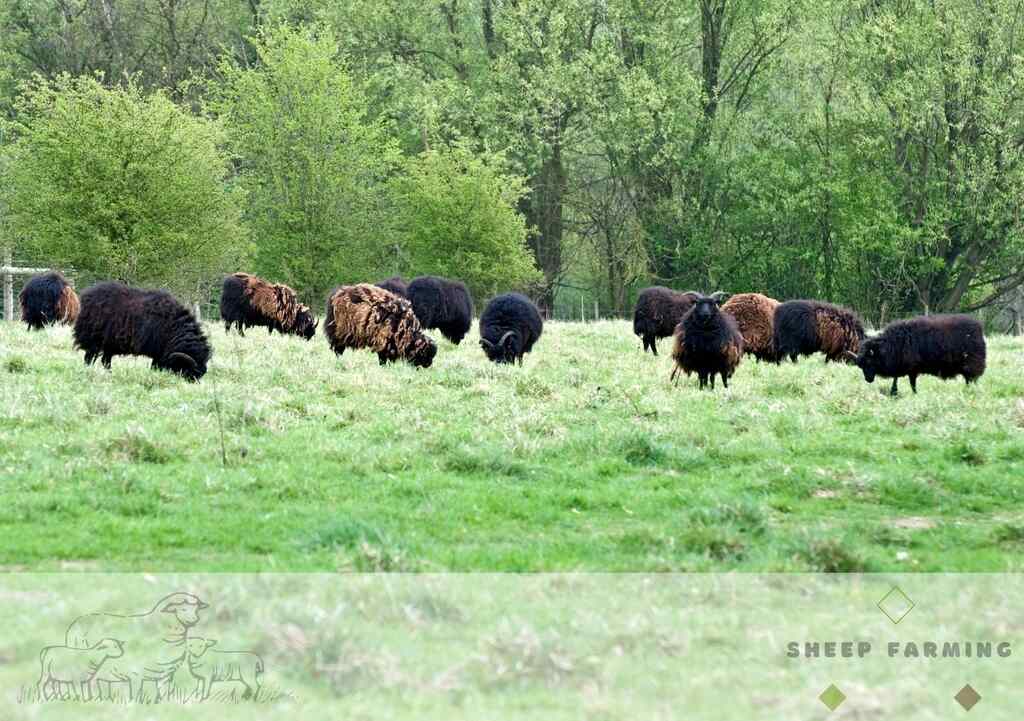
Environment
You can raise them in the following types of environments: open pastures such as grasslands or rough pastures, as well as rugged and hilly terrains.
They thrive in both favorable and harsh terrains, as long as there is sufficient vegetation to sustain them.
Climate
These sheep thrive in various types of climates.
They can handle warmer temperatures effectively as long as they have access to shade and an ample supply of water.
They can also withstand cold temperatures thanks to their thick wool, which keeps them warm.
These sheep are resilient in rainy and windy conditions, which resemble the conditions in their native habitats on the Scottish islands.
Shelter
Hebridean sheep do not require shelter.
These sheep can stay outdoors year-round, as bad or harsh weather does not affect them in any way. Coming from Scotland, where long winters are common, Hebrideans can even lamb outside in winter, rain, and snow.
But, if you provide them with a dry and clean shelter, they will use it. A good shelter is one that offers free access to hay or a place to rest.
Breeding
As everything is easy with these sheep, breeding them is also simple. Hebridean sheep mate naturally without human intervention.
Hebridean sheep should be bred starting at the age of 1 to 1.5 depending on how much the farmer wants to wait. Some prefer to wait longer for the ewe to mature and become strong enough to care for the lamb, but good results have been obtained even if bred at 1 year of age.
Hebridean sheep come into season only once per year in the autumn. The exact date cannot be specified, as some come into season in September while others in mid-October. This also depends on the climate.
But once they are ready for lambing, you can introduce a ram to the ewes.
Hebridean sheep usually lamb twins, but ewes that lamb for the first time have, in most cases, only one larger-than-usual lamb. They lamb very easily and do not require any assistance.
Their gestation period is between 4.5 and 5 months – for example, the ones that come into season in mid-October lamb in mid-March.
They have good mothering skills and produce ample quantities of milk necessary to feed the lambs.
Tip: First-time ewes can encounter challenges in mothering their lambs. If you have a first-time ewe, observe her behavior toward her lambs. The ewe can ignore or not care for the lamb. If you observe this, you can easily place them in a separate pen and keep them together for a while. The ewe will adapt and develop her mothering skills.
Healthy Issues
These sheep are disease-resistant and rarely become ill or experience health problems.
However, when they do, the most common health issues are:
- Skin problems caused by external parasites like ticks, lice, or mites.
- Foot rot, which is a bacterial infection that can affect the hooves, leading to lameness.
- Lambing defects, such as lambs born with a split eyelid, which is common in polycerate sheep breeds.
Why should you raise them?
Sheep are good for beginner farmers or homesteaders looking for a new hobby around the house. Even without previous knowledge of sheep, these animals practically raise themselves.
These sheep have a price of $50 to $75, with registered ones reaching up to $100. Besides this reasonable initial price, you will have minimal ongoing expenses associated with them.
With access to good pasture or meadow, they graze and thrive without the need for supplemental feed. If you make your own hay for the colder months, there is no additional cost.
All you need to provide is a consistent source of fresh water and mineral blocks for them to lick. You don’t even need to build them a shelter since they are used to living outdoors year-round.
In return, you gain numerous benefits. They help maintain a clean pasture and you can enjoy their meat or even harvest their wool to create your blankets or carpets.
A and D
Advantages
- Low-maintenance sheep breed.
- Hardy and disease-resistant.
- Minimal expenses as they do not require supplemental feed or shelter.
- Excellent for conservation grazing.
- Adaptable to all climates and environments.
Disadvantages
- They come into season just once per year.
- The wool is not as valuable as that from other sheep breeds.
- They can exhibit variation in horn shapes and numbers.
History and Origins
The history of Hebridean sheep began in the 19th century when farmers in North and West Britain began raising a breed of small and hardy sheep known at the time as the Scottish Dunface.
These sheep provided wool, meat, and milk for the local population, and their significance extended beyond simple sustenance. At that time, Scottish Dunfaces came in multiple varieties, including the Shetland and North Ronaldsay, which eventually became extinct.
As the agricultural revolution continued, new sheep breeds evolved, and many farmers replaced the Scottish Dunface with other breeds like the Cheviot or Scottish Blackface. As a result, the once-common Scottish Dunface nearly disappeared.
Their unique genetics and historical significance sparked conservation efforts in the mid-20th century aimed at preserving the breed.
Ancestors of Hebridean sheep were exported from St Kilda and were referred to as ‘St Kildas’ in the 19th century when they were kept in the parks of wealthy and aristocratic landowners in Britain. In 1906, they were officially named Hebrideans by John Guille Millais in his classification. In 1973, they were identified by the Rare Breeds Survival Trust as needing conservation.
Conservationists and breed enthusiasts worked to save them from extinction. They created breeding programs and aimed to highlight the breed’s qualities, such as hardiness, adaptability, and disease resistance.
Today, Hebridean sheep are no longer critically endangered and are raised for various purposes.
Do you have any experience with the topic discussed here?
Would you like to improve the information shared and contribute your practical knowledge on the subject?
Your real-world experience as a farmer or rancher could greatly benefit other members, and the community would deeply appreciate your contribution.


